April 23 - 29 2023: Issue 580
Scientists Discover Pristine Deep-Sea Coral Reefs In The Galápagos Marine Reserve
April 17, 2023
- Observations using the newly upgraded human-occupied vehicle Alvin are the first of a deep-sea coral reef in the Galápagos Marine Reserve.
- The reefs are located at depths between 400-600 m, atop previously unmapped seamounts.
Scientists have discovered extensive, ancient deep-sea coral reefs within the Galápagos Marine Reserve (GMR)—the first of their kind ever to be documented inside the marine protected area (MPA) since it was established in 1998. The reef, found at 400-600 meters (1,310-1,970 feet) depth at the summit of a previously unmapped seamount in the central part of the archipelago, supports a breath-taking mix of deep marine life.
Daniel Fornari, marine geologist, and Emeritus Research Scholar at the Woods Hole Oceanographic Institution (WHOI) is a co-lead on the expedition.
Cresting the ridge of an unmapped submerged volcano, and stretching over several kilometres, the impressive reef structure was first recorded by Dr. Michelle Taylor (University of Essex, UK) and Dr. Stuart Banks (Charles Darwin Foundation, Ecuador) while diving in the human-occupied vehicle (HOV) Alvin. This is the first time Alvin has explored this region within the GMR. The submersible recently completed upgrades that included improved high-quality still and ultra-high definition 4K video imaging systems, as well as enhanced sampling capabilities, which allowed for the stunningly clear video of the newly discovered reef sites, as well as the delicate sampling required of the reef. HOV Alvin is owned by the US Navy and operated by WHOI in coordination with the Naval Sea Systems Command (NAVSEA) as part of the NSF-funded National Deep Submergence Facility.
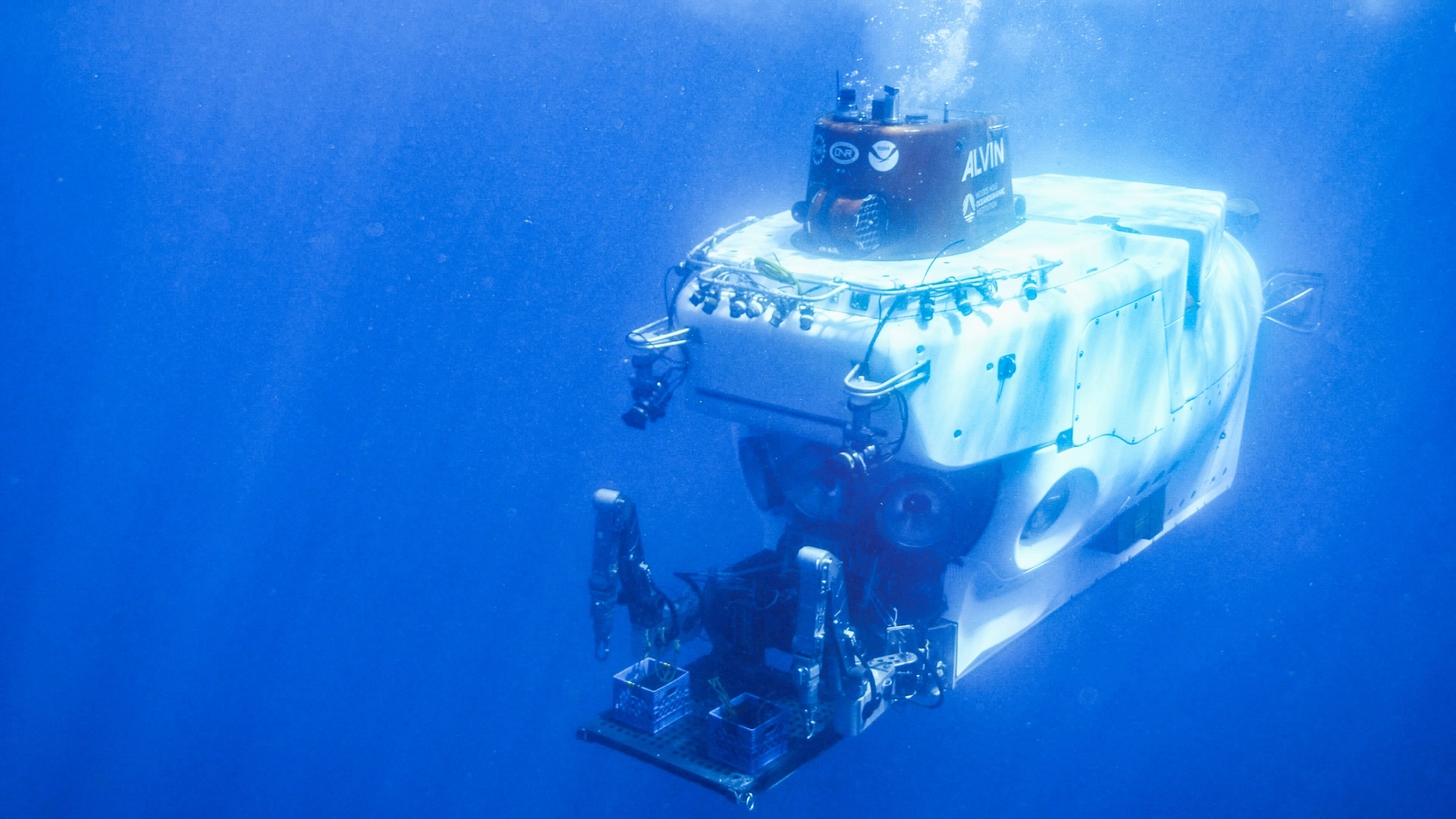
HOV Alvin is owned and operated by the Woods Hole Oceanographic Institution (WHOI). Alvin is responsible for all of the hard rock seafloor lava collection and biological sampling. Photo: WHOI
“Exploring, mapping and sampling the Galápagos Platform with Alvin and Atlantis represents an opportunity to apply 21st-century deep-submergence and seafloor mapping technologies and innovative deep-sea imaging techniques to reveal the beauty and complexity of the volcanic and biological processes that makes the Galápagos so unique," said Fornari, who has mapped and sampled the marine environment in the Galápagos for over 20 years.
Fornari, along with Taylor and Banks, are part of an international group of scientists onboard the US Navy-owned and WHOI-operated research vessel Atlantis that is undertaking the Galápagos Deep 2023 expedition. The expedition includes scientists at Boise State University (USA) and is in collaboration with the Galápagos National Park Directorate, Charles Darwin Foundation and Ecuadorian Navy’s Oceanographic and Antarctic Institute (INOCAR). The expedition is funded by the US National Science Foundation (NSF) and Natural Environmental Research Council (NERC) in the UK.
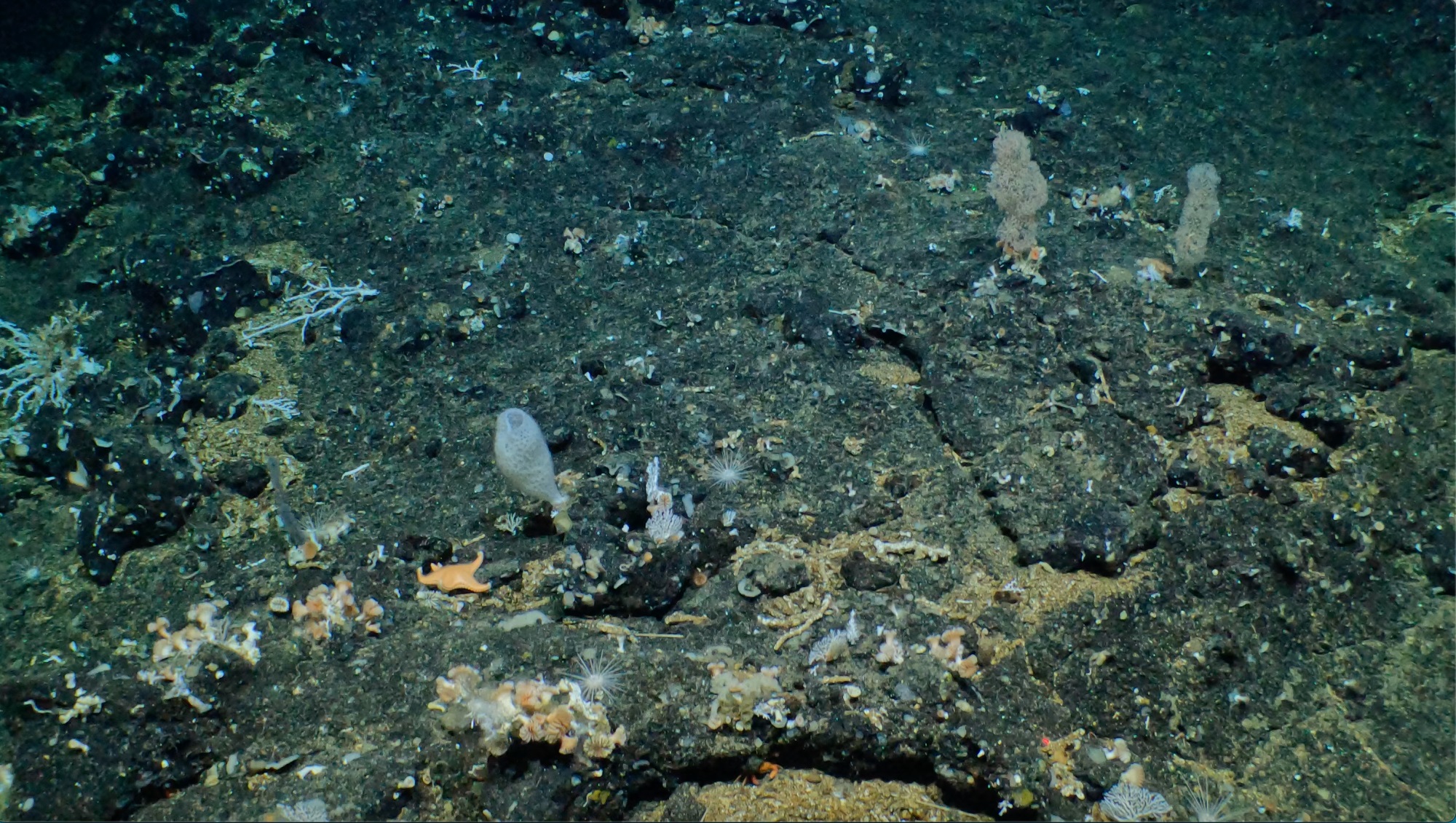
The majority of the Galapagos Platform seafloor is made up of underwater basaltic lava flows and different types of morphologies. How these lava vary over the platform and over depth are of great interest to the science team. Photo: WHOI
Commenting on this ground-breaking discovery, the Minister of Environment of Ecuador, Jose Antonio Dávalos said:
"This is encouraging news. It reaffirms our determination to establish new marine protected areas in Ecuador and to continue promoting the creation of a regional marine protected area in the Eastern Tropical Pacific. The richness of the yet explored depths of our ocean is another reason to strive towards achieving the commitments of the Global Ocean Alliance 30x30, which aims to protect at least 30% of the world's oceans by 2030, aligning sustainable economic activities with conservation."
Gail Christeson, a program director in the U.S. National Science Foundation (NSF)’s Division of Ocean Sciences, said,
“The discovery of this new and healthy reef illustrates the importance of international collaborations to map and image unexplored regions of the seafloor.”
Prior to this discovery, Wellington Reef off the coast of Darwin Island in the far north of the archipelago was thought to be among the few structural shallow coral reefs in the Galápagos Islands to have survived the 1982-83 El Niño event. The new discovery made during dives by scientists in the HOV Alvin shows that sheltered deep-water coral communities have likely persisted for centuries in the depths of the GMR, supporting rich, diverse, and potentially unique marine communities.
Dr. Stuart Banks, Senior Marine Researcher at the Charles Darwin Foundation, and national observer on this expedition adds:
“The captivating thing about these reefs is that they are very old and essentially pristine, unlike those found in many other parts of the world’s oceans. This gives us reference points to understand their importance for marine natural biodiversity heritage, connectivity with regional MPAs, as well as their role in providing goods and services such as carbon cycling and fisheries. It also helps us reconstruct past ocean environments to understand modern climate change. Open waters cover over 95% of the known GMR, of which less than 5% have been explored through modern research expeditions. It’s very likely there are more reef structures across different depths waiting to be explored. We’ll forge ahead with the GNPD and partners to help ensure that such newly discovered habitats are folded into the GMR and Hermandad Marine Reserve planning process and recognized as part of their considerable world heritage value”.
Dr. Michelle Taylor, co-lead of the expedition and Chair of the Deep Sea Society from the University of Essex notes the importance of this discovery for deep sea habitats:
“The discovered reef is novel for several reasons – in shallow reefs where finding 10-20% of coral cover would be considered a relatively unhealthy reef, in the deep-sea this is the norm. Dead coral skeletons making up the remaining 80-90% still provide homes for a huge diversity of life, which is less reliant on the live sections of coral. However, the reefs we’ve found in the last few days have 50-60% live coral in many areas, which is very rare indeed. The reef is pristine and teeming with life – pink octopus, batfish, squat lobsters and an array of deep-sea fish, sharks, and rays. This newly discovered reef is potentially an area of global significance – a canary in the mine for other reefs globally – a site we can monitor over time to see how a pristine habitat evolves with our current climate crisis.”
Scientific findings such as this help inform effective management and conservation actions. The discovery also comes at a time when the Eastern Tropical Pacific countries of Panama, Costa Rica, Colombia, and Ecuador are actively collaborating through a regional Marine Corridor (CMAR) initiative to protect and responsibly manage the ocean upon which we as people depend. Newly declared MPAs such as the Hermandad Marine Reserve (HMR) now connect seamounts in Ecuadorian waters to offshore marine environments such as Costa Rica’s Cocos Island National Park. Natural oceanographic and marine processes transcend national boundaries, which underscores the need for special measures that protect foraging grounds, migratory routes for marine life and sustain responsible fisheries.
For more information about the expedition objectives, scientists, and the R/V Atlantis and HOV Alvin, please visit: galapagosdeep2023.com
About the Galapagos Deep 2023 expedition
The Galapagos Deep 2023 expedition is currently exploring the uncharted depths of the Galapagos Marine Reserve with the historic deep-sea submarine Alvin. Twenty-one scientists are on board the expedition which began on March 27th and ends on April 22nd. It is the first time Alvin has undertaken research dives inside the Galápagos Marine Reserve. Find out more at: galapagosdeep2023.com
The expedition has four scientific objectives:
- Improve the understanding of deep-water biodiversity and geology in Galápagos, building on previous expeditions over the past ~20 years in the region.
- Analyse fossils corals to help reconstruct past climates, as a means to predict future climate- change trends
- Further our understanding of the taxonomy of deep-water organisms such as cold-water corals, their genetic relationships and species evolution
- Better understand how the submerged islands, seamounts, and submarine ridges formed in Galápagos
About the Charles Darwin Foundation and its Research Station
Since 1959, the Charles Darwin Foundation has worked in close partnership with the Galapagos National Park Directorate to protect the Islands’ natural resources and share scientific results for the conservation of this living laboratory. More than one hundred scientists, educators, researchers, support personnel and volunteers from all over the world have participated in this effort. Currently, more than 75% of the staff are Ecuadorian citizens. The Charles Darwin Foundation is committed to the professional development of permanent Galapagos residents as future scientists, for the well-being of the islands and the nation in general.
About the University of Essex
We’re a university where curiosity prevails, and where exploring new ways of thinking and pushing boundaries, isn’t just encouraged, it’s expected. We are determined to do things differently and put student success at the centre of everything we do. We're committed to two things: excellence in teaching and excellence in research. Our determination to make a difference in society means we’re ranked 76th in the global Times Higher Education Impact Rankings, which ranked more than 1,400 universities around the world. Making an impact through our research is at the heart of our University. We're in the UK top 10 for research quality in four subjects (Grade Point Average, REF2021) and in the UK top 10 for research power in five subjects (Times Higher Education 2022).
About the Woods Hole Oceanographic Institution
The Woods Hole Oceanographic Institution (WHOI) is a private, non-profit organization on Cape Cod, Massachusetts, dedicated to marine research, engineering, and higher education. Established in 1930, its primary mission is to understand the ocean and its interaction with the Earth as a whole, and to communicate an understanding of the ocean’s role in the changing global environment. WHOI’s pioneering discoveries stem from an ideal combination of science and engineering—one that has made it one of the most trusted and technically advanced leaders in basic and applied ocean research and exploration anywhere. WHOI is known for its multidisciplinary approach, superior ship operations, and unparalleled deep-sea robotics capabilities. We play a leading role in ocean observation and operate the most extensive suite of data-gathering platforms in the world. Top scientists, engineers, and students collaborate on more than 800 concurrent projects worldwide—both above and below the waves—pushing the boundaries of knowledge and possibility. For more information, please visit www.whoi.edu.
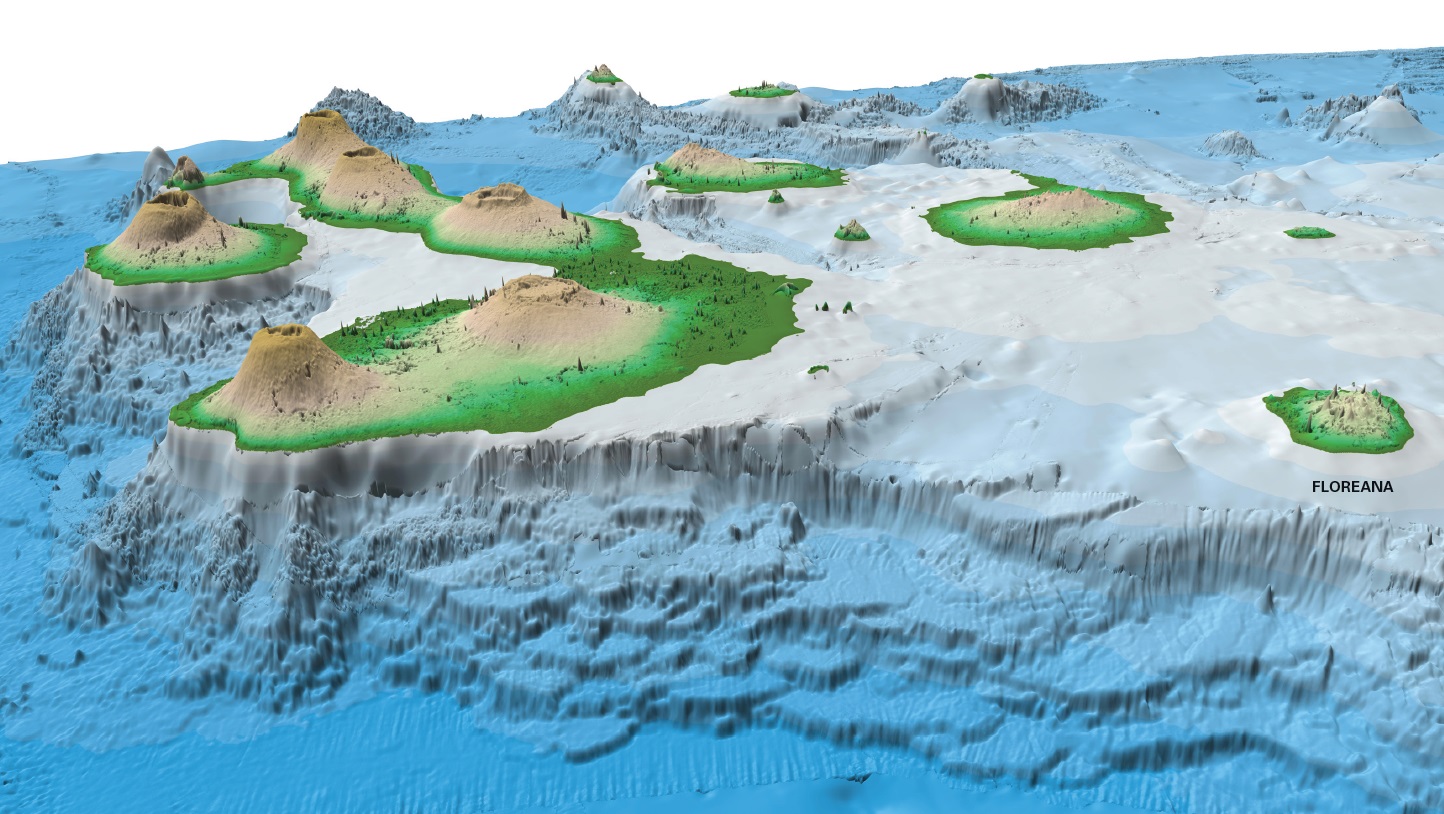
The Galapagos Islands are volcanic archipelago in the Central Eastern Pacific as part as of the country of Ecuador. The youngest and active volcanoes are found on the western islands if Isla Isabela and Isla Fernandina. Photo: WHOI
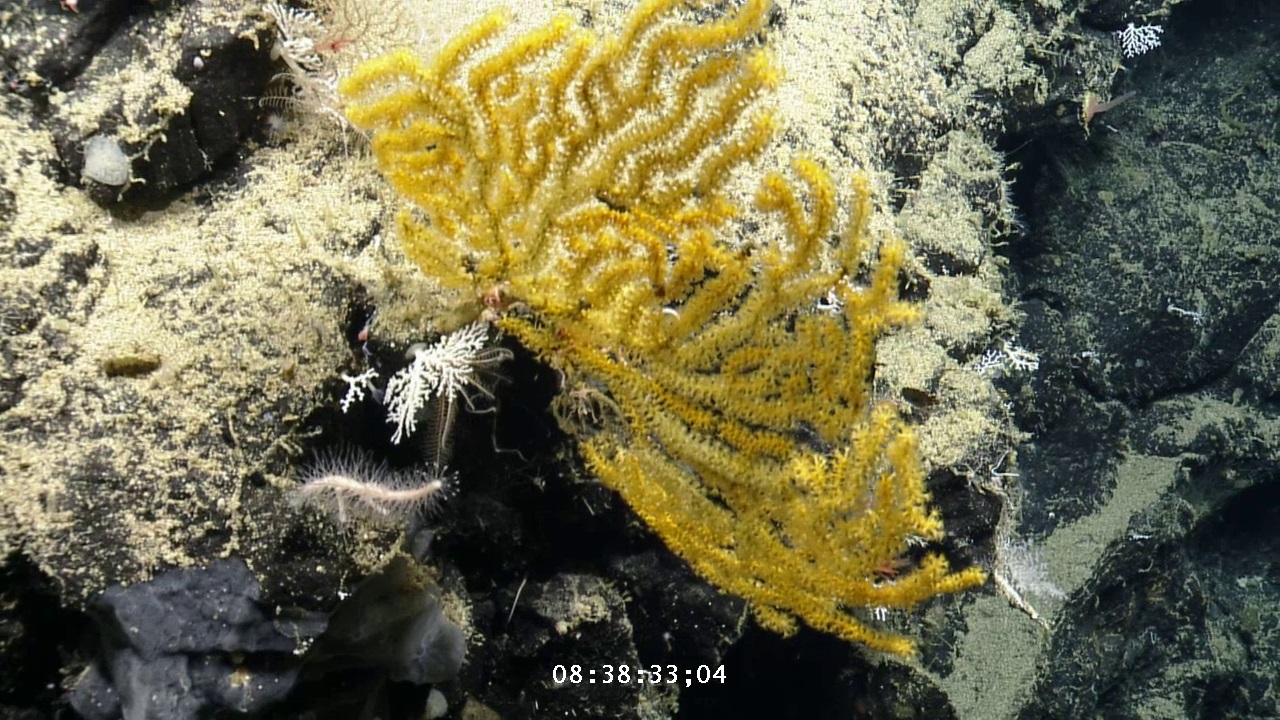
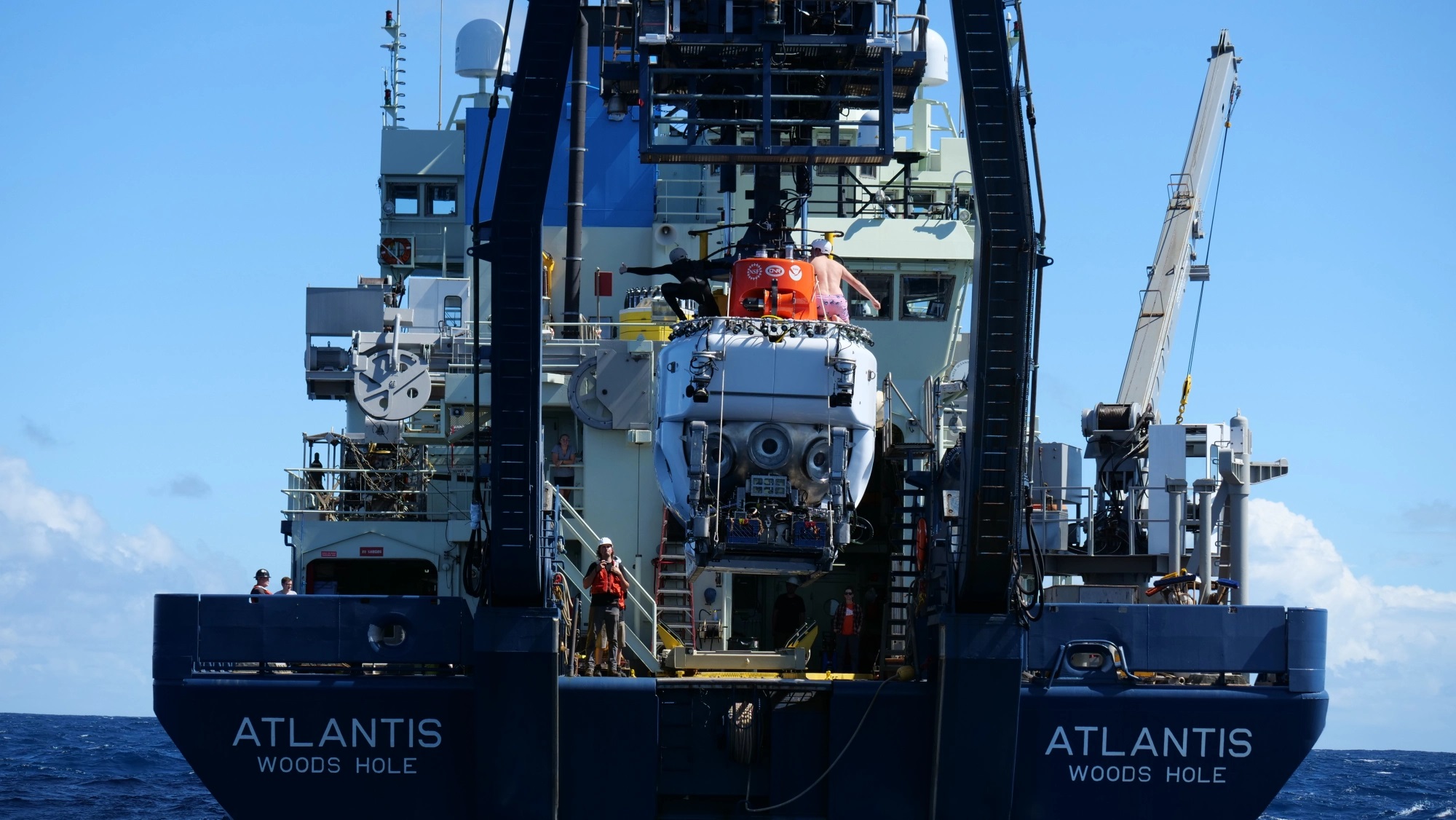
The R/V Atlantis is owned and operated by the Woods Hole Oceanographic Institution (WHOI). Photo: WHOI